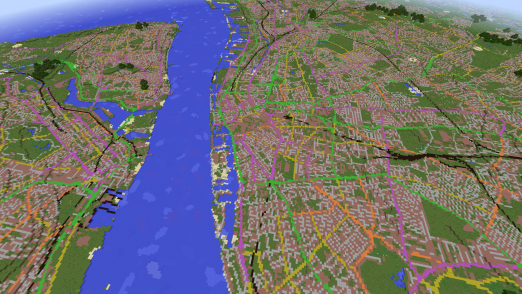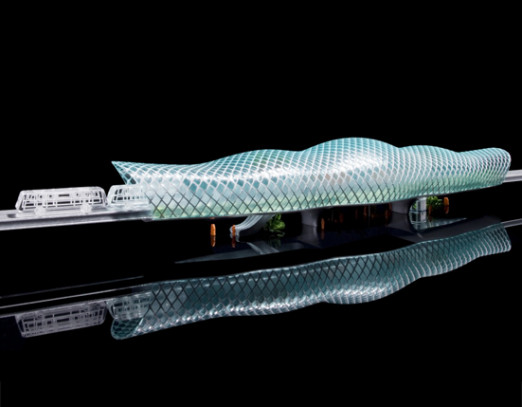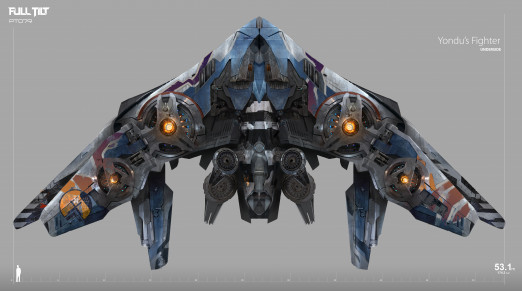Digging deeper into the modeling theme in the Drawn to the Future exhibition, The Physical Model in A Digital Age panel presented diverse perspectives on the uses and futures of the digital and physical model. The panel included Chris Conlon of Amalgam Modelmakers, Jasper Squier of Intergalactic EMEA, Rob Naybour of Weston Williamson + Partners, David Edge of Arup and was chaired by Lewis Blackwell of The Building Centre. From a set of richly informative presentations, here are five takeouts.
1. The 3D print throwaway helps client process
Throughout the evening panelists questioned the limitations of low cost 3D models via digital data. Indeed Chris Conlon of model-makers Amalgam painted a sad but humorous picture of enthused young graduate model-makers buying desktop 3D printers which eventually join the other unloved fussy tech (juicers) in the corner of the kitchen. Yet Arup’s Head of Visualization David Edge, pointed out the value of disposability when it comes to printing 3D models. In presentations to the Olympic Delivery Authority they could print out iterations for the client then throw them away at the end of the meet. The temporary model enables the process not to get bogged down in unnecessarily detailed visuals while still being a valuable “medium of assessment”. An echo of Filippo Brunelleschi’s process in building Florence Cathedral, when as John Astbury writes, the model was left incomplete to “ensure his control over the dome as it was built.” It’s a skill being able to deliver the appropriate visual information at each stage of a project.

(Arup's Augmented Reality Models)
2. Talking sense: no hiding places in physical models
There were fascinating philosophies around the classic physical model spun out by the panel discussing its scale and charm (see below), however Rob Naybour of Architects Weston Williamson + Partners argued that the key value of the physical model was that it “forces people to explain an idea immediately, there’s no place to hide.” The physical model not only gives a sense of scale and how spaces relate, its physicality creates an etiquette of direct communication.

(The Weston + Williamson Studio itself is a landscape of 3D models and physical artefacts)
3. Digital models drives overseas business
The digital is synonymous with globalization, and when it comes to engaging with overseas clients sticking your beautifully crafted model in an envelope marked ‘fragile’ was never going to work. Jasper Squier of Intergalactic agency (originally Vancouver-based, now London too) uses their digital offering to engage overseas visitors. Throught the evening it became clear that the craft of models was a signifier for clients of the ‘care’ of the architects and engineers Squier’s presentation highlighted how craft is also digital as he showed a project by Hakuhodo Agency for Japanese urban developer Mori Building – a magical 3D projection mapping on a Tokyo 1:1000 scale with an interactive component
4. The Model as Technology of Charm
Rob Naybour of Weston Williamson + Partners observed how visitors are “captivated” by the exhibition models they construct. He argued that children especially are a good “barometer of what is accessible and interesting” in the effectiveness of a model. But we might also suggest that the miniature model’s appeal for grown-ups is that it is a toytown utopia, appealing to our visionary innocence. Extending Naybour’s example, creating an effective model is the ‘art of captivation’ whose physical qualities would include the detailing of texture, colour, material – elements highlighted by Chris Conlon of Amalgam who lauded the properties of timber. In a bit of media archeology Conlon delved into the Amalagam Archive to try and pinpoint the moment when Amalgam began to incorporate digital tech in their models and model-making. See the digital calipers being used in the workshop in the image below.

(Archival image of Amalgam Studio, detail of Feature image)
Naybour noted the popularity of the tilt-shift photo-trend (making the real world look like miniatures). The model as The Building Centre’s Lewis Blackwell suggested, blends charm and abstraction – an essential feature of effectively communicating the mood, logistics and execution of a development.

(Brussels by Night, Tilt-Shift image by Romain Ballez, Flickr, Creative Commons Licence)
5. Future? A hybrid media of Augmented and Virtual Reality
Perhaps in the future client briefings using Oculus Rift will come with Nausea tablets. Intergalactic’s Jasper Squier preference for augmented reality over VR wasn’t simply based on his queasy virtual reality experiences. Indeed the video he showed of projection mapping on a 3D model of Tokyo had as much visual magic and digital craft as any classic model. Intergalactic’s sales teams are given iPads through which clients can view augmented visual detail on basic 3D models. Arup’s David Edge displayed the explorative curiosity at the heart of Arup’s approach to new modeling technologies. They took their VR version of The Garden Bridge on the road to a variety of exhibition events such as Futurefest. Along with the Oculus Rift experience of moving in Virtual Reality round the bridge, including detail of foliage, sightlines and viewing corridors of London, they placed Oculus Rift in a shed, with a fan blowing smells to make the experience more tangible.

As awareness that VR experiences are more than the visual, Arup’s Sound Lab enables them to create a survey of sound in a construction area which also has been useful in giving parliamentary committees and citizens a sense of the environmental impact of construction.

It was also a reminder that in the public realm, the model is a technology that helps prepare people for a different future. In summary, the future direction of modellling technology lies in a hybrid media of physical material, visual technology and new representations of other sensory data.
For more events around Drawn to the Future click here. Read an in-depth interview with Amalgam's James Smith on modelling from our Drawn to the Future archive.



